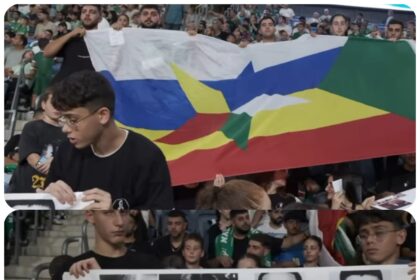For production designer Ward Cummings, "The Wasteland" wasn't just the name of his latest project – it also became a verb. When working on the live-action adaptation of Amazon's game series, Cummings and his team used the word "The Wasteland" as shorthand for the specific retro-futuristic, post-apocalyptic style the franchise is known for. "Everything had to be wasteland-ized," he tells The Verge. "For locations, I would say: 'How do I wasteland this grocery store?'"
But initially, that wasn't the plan. Stepping into the project, Cummings – who had previously worked on shows like Westworld and Blackcraft Land – didn't know much about the games and thought he might need to update the visual style to make it "more palatable." That changed when he did some research. After watching YouTube videos of fans building their props and Pip-Boys and scouring Wiki files for any detail he could find, Cummings says he was enchanted by the blend of the franchise's scoundrel and dark aesthetic. "The script was so well written for the game that we decided we had to do it like the game," he explains. "No one told me to do it, and it was quite wonderful. I did it because I really loved it."
Cummings says he "fell into a rhythm after a while, with something really wastelanded." That meant being extremely detail-oriented. For the underground bunkers, for example, they had completely unique features like triangular bolts and lots of metal arches, all of which needed to be custom-made for the show. "We had our own computer cutting and Vacuform factory," says Cummings. "I had a row of 3D printers in my office for all the small parts." When it came to building Phili settlements, "wasteland-ing" meant creating a small town primarily made of metal, with structures that could reach up to 60 feet in certain places (excluding the aircraft body laid on top). Cummings says it took over 30 welders working on set every day to assemble it.
One element of wastelanded that Cummings particularly loved was the Red Rocket truck stops, with their unique, exaggerated roofs and giant red rockets. But initially, it wasn't in the script. "I begged Graham (Wagner) and Geneva (Robertson-Dworet), the showrunners, to let me do a Red Rocket," says Cummings. Eventually, they found a functional gas station from the 50s in Nyack, New York, with the right look, and the owner gave the crew five days to use the space. That meant three days to prepare, one day of shooting, and then one day to "return it to an active gas station."
Not everything got the wasteland treatment, though. In games, pre-war world shots usually consist of a series of beautifully quaint suburban houses torn from the 50s sitcoms. But for a scene in Amazon's pilot that includes a children's birthday party at a wealthy executive's house, the atmosphere needed to be different. Instead of "wasteland-ing with location, Cummings and the design team created an elegant, predominantly glass house inspired by the futuristic Googie architectural movement. It was a different look that still encompassed wastelanding the period and aesthetics of the show – and made one of the most poignant parts of the show even more dramatic. "If you're gonna get nuked," says Cummings, "you don't want to live in a glass house."

/cdn.vox-cdn.com/uploads/chorus_asset/file/25413751/Fallout_S1_UT_220810_WHIJOJ_00690RC_3000.jpg?w=1536&resize=1536,0&ssl=1)



